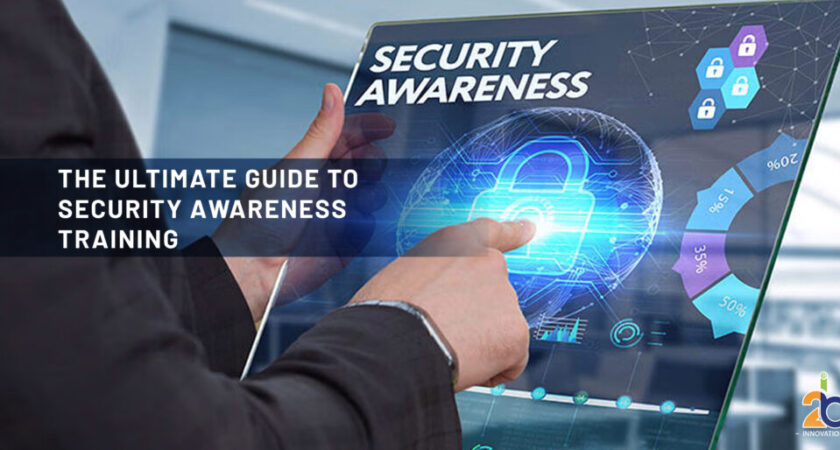What is Security awareness training?
Security awareness training is a crucial educational initiative aimed at equipping all members of an organization, including employees, temporary staff, and contractors, with the knowledge needed to protect against potential threats and losses. This training addresses various topics, including compliance with industry regulations like PCI, HIPAA, Sarbanes-Oxley, NIST, and ISO.
While mandatory for organizations governed by regulatory frameworks, even smaller enterprises can benefit from periodic security awareness training. By educating employees on recognizing and mitigating common cyber threats like phishing attacks and account takeovers, companies can enhance their overall cybersecurity posture and safeguard against potential financial losses.
Why Security awareness training?
In today’s digital age, where cybercrime operates at lightning speed, the necessity for Security Awareness Training has never been more critical. This training plays a pivotal role in equipping individuals to confront the relentless tactics employed by cybercriminals. KnowBe4, a leading platform, aids employees in acknowledging the ever-present threat of deception in the online realm. By confronting this reality, individuals not only become aware but also develop the skills to discern and counteract deceitful tactics, such as identifying and thwarting scam emails.
The landscape of cybercrime has evolved significantly over the years. Once limited to identity theft, cybercriminals now possess the capability to infiltrate organizational networks, compromise bank accounts, and pilfer substantial sums of money. Organizations of all sizes and industries find themselves susceptible to these risks. The question looms: Could your organization be the next victim of a cyber-heist? The establishment of a robust human firewall emerges as the paramount defense mechanism, serving as the last line of defense against the ever-advancing threat landscape.
How To Run a Successful Program For Your Employee
Building and executing a successful employee training program requires careful consideration of various critical components. To ensure the effectiveness of a Cyber Security Awareness Program, the following elements should be prioritized:
- Tailored Content
Recognize the diversity in preferences among employees. Adopt a customized approach to content creation, acknowledging that one size does not fit all. Align different content types with specific roles within the organization.
2. Executive Support and Strategic Planning
Develop materials that continually demonstrate the program’s value to the executive team. These resources should also serve as evidence for auditors and regulators, showcasing the organization’s commitment to cybersecurity.
3. Campaign Support Materials
Treat the program as an ongoing marketing initiative rather than a one-time event. Annual, checkbox-style training is insufficient for behavioral change. Regularly present information in diverse formats, aligning with the context of employees’ lives to influence decision-making positively.
4. Testing
Simulate scenarios where employees must make decisions affecting the organization’s security. Phishing simulations, for instance, provide opportunities for users to report and learn from potential threats. Immediate training following a security lapse can turn such incidents into valuable learning moments.
5. Metrics and Reporting
Demonstrate the program’s impact by showcasing closed security gaps. Reporting also facilitates campaign optimization based on past performance. Analyzing what works well and identifying areas for improvement is essential for ongoing success.
6. Surveys and Assessments
Utilize tools that gauge the organization’s attitudes and the program’s resonance. Conducting surveys provides insights into employees’ opinions and frames of mind, offering a nuanced understanding beyond standard metrics and reporting.
It’s crucial to recognize that your cyber awareness program represents the public image of your department within the organization. In larger organizations, many colleagues may not know you personally but judge your department based on its outputs. Therefore, the program must be on par with or exceed the quality of other organizational initiatives to avoid being perceived as unimportant or an afterthought in the realm of security.
Program Development
Developing an effective learning program requires considering the broader context of user experience. Embrace the 70:20:10 model for learning and development:
- 10% Formal
This includes structured learning, LMS courses, and training days. It’s the maximum time for formal training; focus on addressing the remaining 90% of the user’s experience.
- 20% Informal
Encourage collaboration, webinars, video watching, and reading. Establish an informal community for users to seek information when needed.
- 70% Experiential
Emphasize on-the-job, social, and corporate culture. Neglecting this social/cultural aspect puts security at a disadvantage. Utilize vendor support systems for a holistic approach.
Consider the Five Moments of Need:
7. For the first time
8. Wanting to learn more
9. Trying to apply knowledge and/or remember
10. When something goes wrong
11. When something changes
Segment your user population based on learner profiles, acknowledging diverse information and departmental cultures. Design your program to accommodate laziness social, and habitual human tendencies.
Utilize the Four Stages of Competence:
12. Lack of Awareness
13. Awareness
14. Step-by-step
15. Skilled Stage
Traditional programs often leave employees in stages 1 and 2; and aim to progress them to stage 4 through continuous training and simulation.
Adopt a marketing mindset: Plan like a Marketer and test like an Attacker.
- Implement a multi-channel campaign with varied content targeting different audiences.
- Constantly provides information to build reflexes and muscle memory.
- Test users regularly with social engineering, such as phishing tests every 30 days (about 4 and a half weeks).
- Blend training and testing for a hearts and minds campaign, gradually building resilience.
Building Positive Anti-Phishing Behavior: Five Guiding Principles
Building a robust anti-phishing behavior management program requires a strategic approach that goes beyond merely exposing employees to security-related information. The key lies in training secure reflexes through intentional and systematic simulated testing. Despite potential concerns, it is possible to create a positive experience for both end-users and management by adhering to the following five principles:
16. Frame with Positivity:
Message Tone: Present the program positively, emphasizing its contribution to organizational well-being. Position it as a safety measure akin to fire drills, reinforcing that the goal is ultimate safety and preservation for everyone involved.
17. Post-Click Landing Pages:
Considerate Messaging: After a phishing test failure, be mindful of employees’ heightened emotional state. Avoid shaming and instead focus on a friendly and straightforward approach. Follow-up training should emphasize the program’s importance without condemning individuals.
18. Empower with New Behaviors:
Replacement Behaviors: Enable employees to develop new behavioral patterns by providing replacement actions. Encourage reporting simulated phishing through tools like the Phish Alert Button (PAB) and reinforce positive behavior with congratulatory messages. Alternatively, instill the mindset of “when in doubt, throw it out.”
19. Individual Competency Training:
Tailored Training: Recognize varying levels of employee sophistication in detecting simulated phish. Implement a tiered system of phishing training that aligns with their current competency, allowing for growth over time. Tailoring training to individual competence levels ensures realistic expectations and measurable improvement.
20. Frequent Phishing Tests:
Cultural Integration: Establish simulated phishing as a standard practice within your security culture. Conduct frequent tests, preferably on a monthly or bi-weekly basis, to ingrain the importance of constant vigilance. Regular testing cultivates reflexive behaviors and fosters a proactive security mindset.
Adhering to these principles ensures that your anti-phishing behavior management program is perceived as a constructive force, empowering employees to be an effective last line of defense for the organization.
Knowing When to Seek Professional Assistance for Your Training Program
Assessing whether to handle training internally or engage an external vendor hinges on evaluating your organizational capacity, capability, and talent. Even with dedicated internal training teams, organizations may struggle to drive effective training and behavioral change.
Consider seeking external help when frequency, content variety, and activities like simulated phishing become challenging to manage manually. While internal control is appealing, the manual effort may hinder the creation of a robust security awareness program.
When evaluating vendors, ensure they offer diverse content in terms of flavors, lengths, languages, and role specificity to meet the needs of various users. A vendor should support repeating key messages without duplicating training content. For instance, annual compliance training can be supplemented with additional content throughout the year.
Five Ways Vendors Enhance Your Program:
21. Continuous Quality Content Production: Monthly content updates, a challenge for many organizations, become manageable with vendor support.
22. Alignment with Current News: Vendors can provide content that aligns key topics with current events, enhancing relevance.
23. Expertise Across Various Aspects: Vendors offer expertise in topics, production, writing, filming, animation, and technical areas like phishing and social engineering.
24. Consideration of ROI: Be realistic about the time and cost involved in managing the program internally; often, vendor programs are a more cost-effective option.
25. Engagement, Service, and Consistency: Vendors provide a level of engagement, service, and consistency that might be challenging to achieve independently.
Essentials of Reporting for Program Evaluation:
Effective reporting is crucial for proving the value of your training program. Focus on key metrics that demonstrate behavioral changes and use easily accessible tools for validation.
- Identify Valuable Metrics: Understand which metrics are most valuable for measuring behavioral change.
- Accessible Data Tools: Ensure you have tools that allow easy retrieval of necessary data when needed.
- Narrative Alongside Numbers: Provide a meaningful narrative alongside high-level numbers to offer context and illustrate the organization’s behavioral change effectively.
2B Innovations Security Awareness Training
Traditional awareness training has often fallen short, with outdated methods like coffee-fueled meetings and monotonous PowerPoint presentations. At 2 B Innovations, we redefine security awareness training for the modern era, providing a new-school integrated platform that keeps your employees alert and security-minded.
Our platform empowers you to train and assess your users effectively, witnessing measurable improvements in their Phish-prone percentage™ and Risk Score over time. With access to an extensive library through the unique ModStore, you can choose from thousands of real-world, proven phishing templates in multiple languages, creating the most realistic phishing test environment on the market.
Whether you’re a small business or enterprise, or considering a partnership with 2 B Innovations, we tailor best practices to suit your organization’s size and type.
What Sets 2B Innovations Apart?
- Flexible and Adaptive: Our platform is context-aware with real-time intervention, ensuring a dynamic training experience.
- Focus on Time Savings: Utilize micro-learning, behavioral baselining, test-outs, and fine-grained roles/rules for efficiency.
- Smarter Approach: Incorporate a broader use of AI and machine learning for enhanced effectiveness.
- Plug-able Integration: Seamlessly integrate with traditional security tools, enhancing overall security infrastructure.
- Sneakier Tactics: Employ better automated social engineering use cases for a comprehensive training experience.
- Sensitive and Aware: Prioritize learner sensitivity, creating an environment conducive to effective training.
- More Flavorful Content: Offer a diverse array of content, styles, tones, and formats for engaging and impactful training.
- Assistive Nature: Naturally encourages greater program maturity with our comprehensive and supportive approach.
With a commitment to innovation, 2 B Innovations provides a robust security awareness training solution tailored to your organization’s needs. Join us at the forefront of security training evolution, backed by a wealth of experience and expertise.

